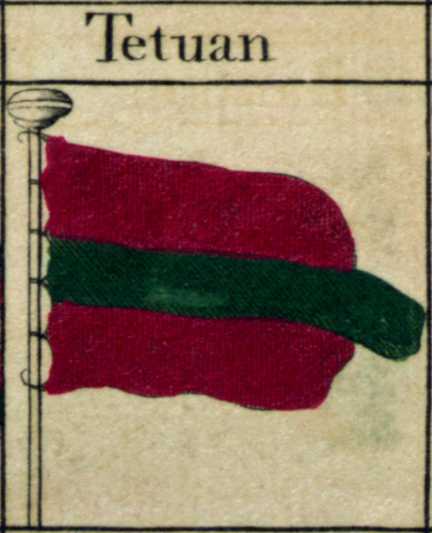|
Medina Of T├®touan
The Medina of Tetouan is a Medina quarter in Tetouan, Morocco. It was designated by the UNESCO a World Heritage Site A World Heritage Site is a landmark or area with legal protection by an international convention administered by the United Nations Educational, Scientific and Cultural Organization (UNESCO). World Heritage Sites are designated by UNESCO for h ... in 1985. History T├®touan was of particular importance in the Islamic period, from the 8th century onwards, since it served as the main point of contact between Morocco and Andalusia. After the Reconquest, the town was rebuilt by Andalusian refugees who had been expelled by the Spanish. This is well illustrated by its art and architecture, which reveal clear Andalusian influence. Although one of the smallest of the Moroccan medinas, T├®touan is unquestionably the most complete and it has been largely untouched by subsequent outside influences. Sources {{Free-content attribution, title = Medina of T├®touan (formerly ... [...More Info...] [...Related Items...] OR: [Wikipedia] [Google] [Baidu] |
Medina Quarter
A medina (from ar, ┘ģž»┘Ŗ┘åž®, translit=mad─½nah, lit=city) is a historical district in a number of North African cities, often corresponding to an old walled city. The term comes from the Arabic word simply meaning "city" or "town". Historical background Prior to the rise and intrusion of European colonial rule in North Africa, the region was home to many major cities which had long been centres of culture, commerce, and political power over many centuries. In Algeria, the French conquest that began in 1830 and brought the country under colonial control resulted in significant destruction of the urban fabric of its historic cities. Colonial rule also led to the dismantling of many traditional urban institutions, the disruption of local culture, and even a certain level of depopulation over time. Fewer cities have preserved their pre-colonial urban fabric in Algeria by comparison with neighbouring countries, but significant remains have been preserved in historic cities suc ... [...More Info...] [...Related Items...] OR: [Wikipedia] [Google] [Baidu] |
T├®touan
T├®touan ( ar, ž¬žĘ┘łž¦┘å, tiß╣Łw─ün, ber, ŌĄ£ŌĄēŌĄ¤ŌĄ¤Ō┤░ŌĄĪŌ┤░ŌĄÅ, tiß╣Łß╣Ławan; es, Tetu├Īn) is a city in northern Morocco. It lies along the Martil Valley and is one of the two major ports of Morocco on the Mediterranean Sea, a few miles south of the Strait of Gibraltar, and about E.S.E. of Tangier. In the 2014 Moroccan census, the city recorded a population of 380,787 inhabitants. It is part of the administrative division Tanger-Tetouan-Al Hoceima. The city has witnessed many development cycles spanning over more than 2,000 years. The first settlements, discovered a few miles outside of the modern city limits, belonged to Mauretanian Berbers and date back to the 3rd century BC. A century later, Phoenicians traded there and after them the siteŌĆöknown now as the ancient town of TamudaŌĆöbecame a Roman colony under Emperor Augustus.M. Tarradell, ''El poblamiento antiguo del Rio Martin'', Tamuda, IV, 1957, p. 272M. R. El Azifi, ┬½ L'habitat ancien de la vall├®e de Martil ┬ ... [...More Info...] [...Related Items...] OR: [Wikipedia] [Google] [Baidu] |
Morocco
Morocco (),, ) officially the Kingdom of Morocco, is the westernmost country in the Maghreb region of North Africa. It overlooks the Mediterranean Sea to the north and the Atlantic Ocean to the west, and has land borders with Algeria to the east, and the disputed territory of Western Sahara to the south. Mauritania lies to the south of Western Sahara. Morocco also claims the Spanish exclaves of Ceuta, Melilla and Pe├▒├│n de V├®lez de la Gomera, and several small Spanish-controlled islands off its coast. It spans an area of or , with a population of roughly 37 million. Its official and predominant religion is Islam, and the official languages are Arabic and Berber; the Moroccan dialect of Arabic and French are also widely spoken. Moroccan identity and culture is a mix of Arab, Berber, and European cultures. Its capital is Rabat, while its largest city is Casablanca. In a region inhabited since the Paleolithic Era over 300,000 years ago, the first Moroccan s ... [...More Info...] [...Related Items...] OR: [Wikipedia] [Google] [Baidu] |
UNESCO
The United Nations Educational, Scientific and Cultural Organization is a specialized agency of the United Nations (UN) aimed at promoting world peace and security through international cooperation in education, arts, sciences and culture. It has 193 member states and 12 associate members, as well as partners in the non-governmental, intergovernmental and private sector. Headquartered at the World Heritage Centre in Paris, France, UNESCO has 53 regional field offices and 199 national commissions that facilitate its global mandate. UNESCO was founded in 1945 as the successor to the League of Nations's International Committee on Intellectual Cooperation.English summary). Its constitution establishes the agency's goals, governing structure, and operating framework. UNESCO's founding mission, which was shaped by the Second World War, is to advance peace, sustainable development and human rights by facilitating collaboration and dialogue among nations. It pursues this objective t ... [...More Info...] [...Related Items...] OR: [Wikipedia] [Google] [Baidu] |
World Heritage Site
A World Heritage Site is a landmark or area with legal protection by an international convention administered by the United Nations Educational, Scientific and Cultural Organization (UNESCO). World Heritage Sites are designated by UNESCO for having cultural, historical, scientific or other form of significance. The sites are judged to contain " cultural and natural heritage around the world considered to be of outstanding value to humanity". To be selected, a World Heritage Site must be a somehow unique landmark which is geographically and historically identifiable and has special cultural or physical significance. For example, World Heritage Sites might be ancient ruins or historical structures, buildings, cities, deserts, forests, islands, lakes, monuments, mountains, or wilderness areas. A World Heritage Site may signify a remarkable accomplishment of humanity, and serve as evidence of our intellectual history on the planet, or it might be a place of great natural beauty. A ... [...More Info...] [...Related Items...] OR: [Wikipedia] [Google] [Baidu] |

